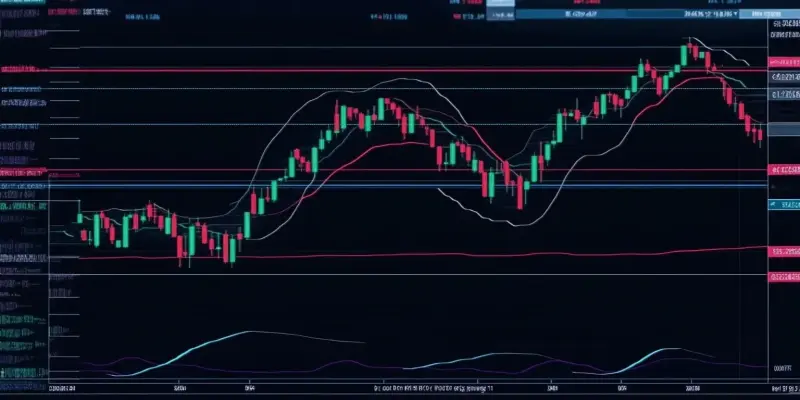In the world of cryptocurrency, a stunning financial feat has captured widespread attention: a savvy trader managed to transform a modest $2,000 investment into an astonishing $43 million by investing in Pepe (PEPE), a memecoin known for its frog-themed aesthetics. This eye-popping return, guided by precise timing and acute market awareness, sheds light on the extraordinary yet unpredictable nature of the memecoin market. A report from Lookonchain, a blockchain intelligence platform, detailed the trader’s initial purchase of 1.5 trillion PEPE for $2,184 and subsequent strategic partial sale yielding millions in profit, while still retaining a substantial holding.
Memecoins have been notorious for their speculative appeal, gaining traction primarily through viral social media campaigns and community hype. Unlike traditional cryptocurrencies with groundbreaking technological foundations, memecoins often lack intrinsic utility, relying instead on cultural memes and user enthusiasm to drive market value. Despite these characteristics, or perhaps because of them, memecoins have delivered incredible returns for some investors. Another notable instance saw an adventurous Pepe investor turn a mere $27 into a staggering $52 million, exemplifying the lucrative, albeit highly volatile, nature of these assets.
The Enthralling World of Memecoins
The remarkable financial milestones achieved by traders investing in memecoins prompt a closer look at what drives their appeal and market patterns. Central to their allure is their high-beta nature, meaning they exhibit significant price volatility compared to more stable assets. This inherent volatility, coupled with social media-fueled momentum, often results in sharp price surges. Tokens like DOGE and FLOKI have witnessed similar trends, surging in value due to optimistic market sentiments, further amplified by general strength in the broader cryptocurrency market.
Stella Zlatareva of Nexo pointed out that this phenomenon often diverts capital away from more established digital assets, leading to market distortions. For instance, the launch of the Trump (TRUMP) token has seen Solana (SOL) lose over half its value. This capital shift is not driven by fundamental factors but by opportunistic investors chasing the next potential windfall. The memecoin ecosystem is characterized by these rapid capital flows from one trending coin to another, driven by the fear of missing out (FOMO).
This speculative environment has not only brought enormous returns to some but has also introduced significant risks. The phenomena of insider scams and related fraudulent activities have marred the reputation of memecoins. US lawmakers have responded with regulatory actions designed to protect crypto investors. One such initiative introduced by New York policymakers is aimed at curbing such fraudulent activities following controversies like the one surrounding the Libra (LIBRA) token.
The Broader Impact on the Crypto Market
Dan Hughes, founder of Radix, emphasized the tendency of memecoins to recycle existing capital within the ecosystem rather than attracting new external investments. This recycling process results in money moving from one meme-driven asset to another, leading to transient value spikes and subsequent drops, reflecting the capricious nature of memecoin investments. Investors, lured by tales of extraordinary profits, often jump from one coin to the next, hoping to catch the crescendo of the next viral trend.
This volatile cycling of capital can have a destabilizing effect on the broader cryptocurrency market. Established assets may suffer as funds are pulled in favor of fleeting memecoin opportunities, as seen with Solana. Additionally, the sporadic and whimsical nature of these investments introduces unpredictability, posing challenges for long-term market stability and investor confidence. The speculative rush into memecoins also reflects larger trends within the crypto world, where sentiment-driven movements can often overshadow fundamental technological advancements and utility.
Despite the tumultuous landscape, memecoins continue to spark immense interest and participation. The potential for exponential profits, although accompanied by substantial risk, remains a powerful draw. As the memecoin market evolves, investors are likely to keep chasing these high-stakes opportunities, undeterred by the inherent volatility and the looming possibility of scams.
Navigating the Speculative Landscape
In the realm of cryptocurrency, a remarkable financial achievement has caught widespread attention: a savvy trader managed to turn a modest $2,000 investment into an astounding $43 million by investing in Pepe (PEPE), a memecoin celebrated for its frog-themed design. This incredible return, driven by precise timing and sharp market insight, highlights the extraordinary yet unpredictable nature of the memecoin market. According to a report from Lookonchain, a blockchain intelligence platform, the trader’s initial purchase of 1.5 trillion PEPE for $2,184 led to strategic partial sales resulting in millions in profit, while keeping a substantial amount.
Memecoins are infamous for their speculative nature, gaining popularity mainly through viral social media campaigns and community enthusiasm. Unlike traditional cryptocurrencies with groundbreaking technology, memecoins often lack inherent utility, relying instead on cultural memes and user excitement for market value. Despite, or perhaps because of these traits, memecoins have provided incredible gains for some investors. Another instance saw a daring Pepe investor transform a mere $27 into an impressive $52 million, showcasing the lucrative but extremely volatile nature of these assets.

